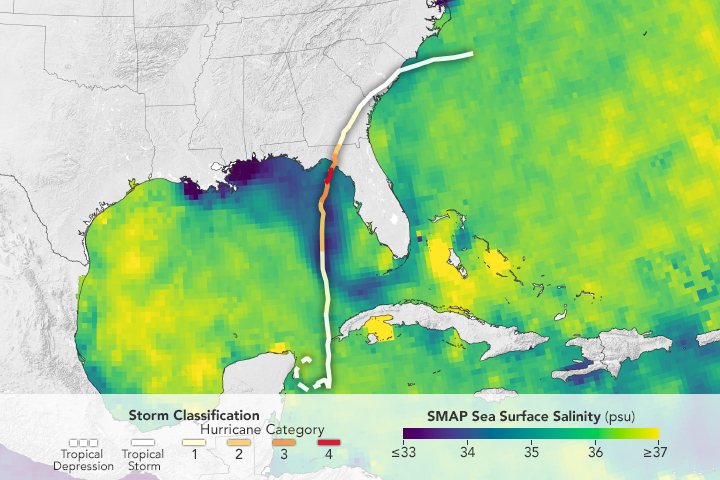



Recent Imagery
You will be directed to the NASA Visible Earth webpage when you select Images by Mission below, or click on the images at right that are randomly generated to represent four out of all possible topics.
You are here
ISS-Rapid Scatterometer (ISS-RapidScat)
Status:
Completed
Mission Category:
Other
Launch Date: September 21, 2014
Launch Location: Cape Canaveral Air Force Station
Actual Completion Date: October 17, 2016
The primary goal of the Rapid Scatterometer (RapidScat) was to provide a gap-filler ocean vector winds measurement capability to mitigate the loss of the NASA Quick Scatterometer (QuikSCAT). Scatterometers are radar instruments that can measure near-surface wind speed and direction over the ocean, and have proved to be extremely valuable for weather forecasting, including hurricane monitoring, and for monitoring large-scale changes in the Earth’s climate, such as El Niño. The RapidScat instrument was be mounted on the International Space Station (ISS) and provided wind measurements that enhance the international scatterometer constellation, providing unique cross-calibration capabilities to extend the climate data record initiated by the QuikSCAT satellite. In addition, because of the unique orbit characteristics of the ISS, RapidScat enabled the first measurements of the systematic diurnal changes of winds over the ocean.
RapidScat was sponsored by NASA's Human Exploration and Operations Mission Directorate (HEOMD).
Key ISS-Rapid Scatterometer Facts
| Mission/Portal Page: | http://www.jpl.nasa.gov/missions/iss-rapidscat/ |
|---|---|
| Launch Vehicle: | Space X Falcon 9 |
| Altitude:Distance from sea level. | 420km |
| Inclination: | 51.65° |
| Origination: | NASA |
| Instruments: |
Rapid Scatterometer |
| Principal Investigator(s): |
Ernesto Rodriguez, Ph.D., NASA Jet Propulsion Laboratory, Pasadena, CA, United States |
Science Goals:
- To provide ocean vector wind data for a period of two years to mitigate the loss of QuikSCAT to scientists and weather forecasters.
- To serve as a calibration standard to the international scatterometer constellation, enabling the continuation of the QuikSCAT data record, and enabling monitoring of climate variability and change over multiple decades.
- To study the systematic variation of ocean winds as a function of time of day. These variations are important in understanding the dynamics and interactions of the ocean and atmosphere in the tropics, where current climate models still exhibit shortcomings, and which play a significant role in governing the Earth’s energy and water budgets.

